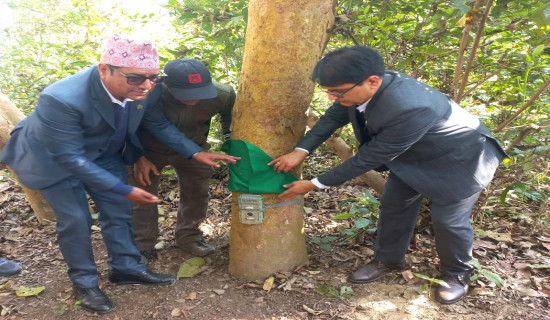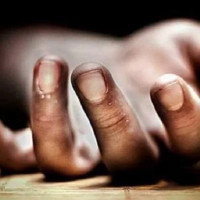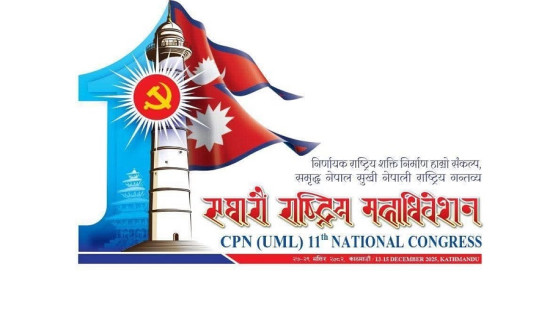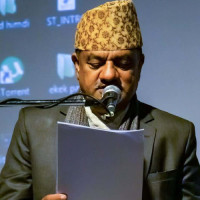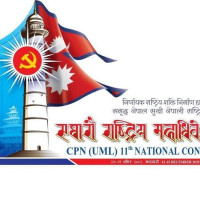- Tuesday, 16 December 2025
Sustained effort needed in HIV care
By Nayak Paudel/Nisha Rai,Kathmandu/Dharan, Dec. 2: Data show that from 2010 to 2022 the rate of new cases of Human Immunodeficiency Virus (HIV) declined by 77 per cent and death from the virus by 80 per cent.
Moreover, while 5,087 new individuals were estimated to have been infected with HIV in 2000, the estimate declined to 488 in 2022, a decrement of 90 per cent. Of the new cases in 2022, 52 were children aged below 14 years.
According to the National Center for AIDS and STD Control (NCASC), there were at least 30,000 HIV patients in the country until the end of 2022.
“Effective prevention and access to diagnosis and treatment have led to a decline in new HIV cases and AIDS deaths. Infected individuals can lead a healthy life through regular treatment and medication. Nepal government is providing antiretroviral treatment for free from designated health centres,” read a message by Prime Minister Pushpa Kamal Dahal ‘Prachanda’ on the occasion of World AIDS Day, which is celebrated on December 1 every year.
Likewise, in his message on World AIDS Day, Minister for Health and Population Mohan Bahadur Basnet said that the government was committed to achieving the 95-95-95 targets.
As per the global target, 95 per cent of people with HIV should be aware of the transmission, 95 per cent of those should be taking lifesaving antiretroviral treatment (ART) and 95 per cent of those on medication should achieve a suppressed viral load for the benefit of the persons’ health and for reducing onward HIV transmission.
The NCASC stated that 15,900,000 USD was spent on national HIV programmes in 2022. Nepal government had invested 19 per cent of the amount.
However, despite commitments from government authorities and a rise in the number of awareness campaigns, HIV patients continue to struggle for proper treatment and other necessities.
The 2023 World Aids Day factsheet made public by the NCASC on November 30, stated that 344 HIV patients were estimated to have died in 2022.
Similarly, stakeholders and HIV patients stressed that there were
several challenges for the patients outside the Kathmandu Valley. The NCASC states that there are 85 ART centres in 61 districts across the country.
“Many HIV patients are not diagnosed. Many of the diagnosed ones lack proper treatment services. HIV is still a killer in rural areas,” said Roman Kumar Rai, Koshi Province supervisor for the National Association of People Living with HIV/AIDS in Nepal (NAP+N).
Rai made the remarks at an interaction programme with HIV/AIDS patients organised by SCALE Initiative in Sunsari district on Friday.
“Hospitals in Udayapur and Bhadrapur only provide diagnosis services. Many HIV patients in Koshi are bound to arrive at the Dharan-based BP Koirala Institute of Health Sciences (BPKIHS) for treatment. HIV has been a killer for many in the lack of access to effective treatment,” said Rai.
“Koshi Hospital has an effective Prevention of Mother to Child Transmissions (PMTCT) programme, but it does not provide surgery, endoscopy, colonoscopy and dialysis services. That is why many HIV patients from Koshi as well as Madhes Provinces arrive in Dharan,” Rai added.
Nevertheless, the BPKIHS does not have a colonoscopy service for HIV patients.
Rai also stressed that the HIV patients were also deprived of basic rights, such as food, shelter, education and jobs, due to social stereotypes and discrimination.
Speaking at the interaction prorgamme, Nirmala, a HIV patient whose name has been changed, urged the authorities to make HIV-related treatment available in at least every district hospital.
“It is more difficult for female HIV patients to seek treatment. There are also economic challenges while buying kits. We managed a kit from our own expense every time we go for treatment. HIV treatment is still not accessible and affordable,” complained Nirmala.
Parbat (name changed), another HIV patient, said that he was unable to roam outside freely and seek a job due to discrimination from the community and the government.
“I wanted to study more. I wanted to go abroad. However, I was denied both due to the society and its norms. Many like me have stopped going to schools and colleges fearing discrimination and mistreatment,” Parbat added.
The patients also complained that their children were at further risk of discrimination.
“There are even instances where HIV patients have been fired from the jobs citing different reasons after being diagnosed,” said Dipak (name changed), another HIV patient who attended the interaction programme in Sunsari.
“A lot has been done for HIV/AIDS patients by the government, NGOs, INGOs and locals. However, more needs to be done,” said Rai.



